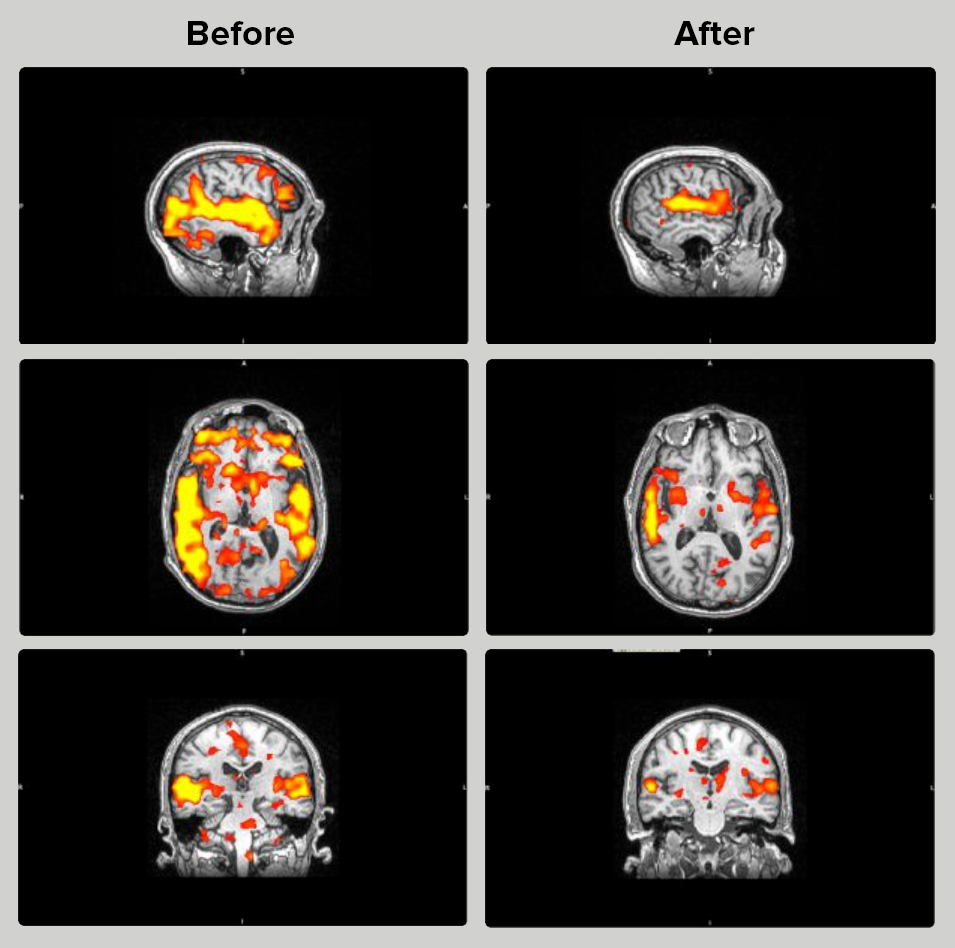Our approach
Until recently tinnitus was primarily treated using drug therapy. However, at the TheraMind center of Santa Barbara our neurologists have developed diagnostic tests and treatment protocols which have proven effective in substantially reducing or eliminating altogether pre-existing tinnitus symptoms. After an initial neurological/audiological examination patients perform a “frequency match” at the Center. This is followed by an fMRI to:
a) confirm the tinnitus frequency,
b) identify the precise brain location where symptoms occur, and
c) eliminate certain potential causes (e.g. lesions).
Next, our physicians develop a patient-specific treatment regimen which primarily involves using TMS therapy to inhibit an overactive brain locale. The fMRI images below demonstrate the impact of targeted TMS therapy on tinnitus with hyper-activity shown in red/yellow (Before) and much reduced red/yellow activity (After).


